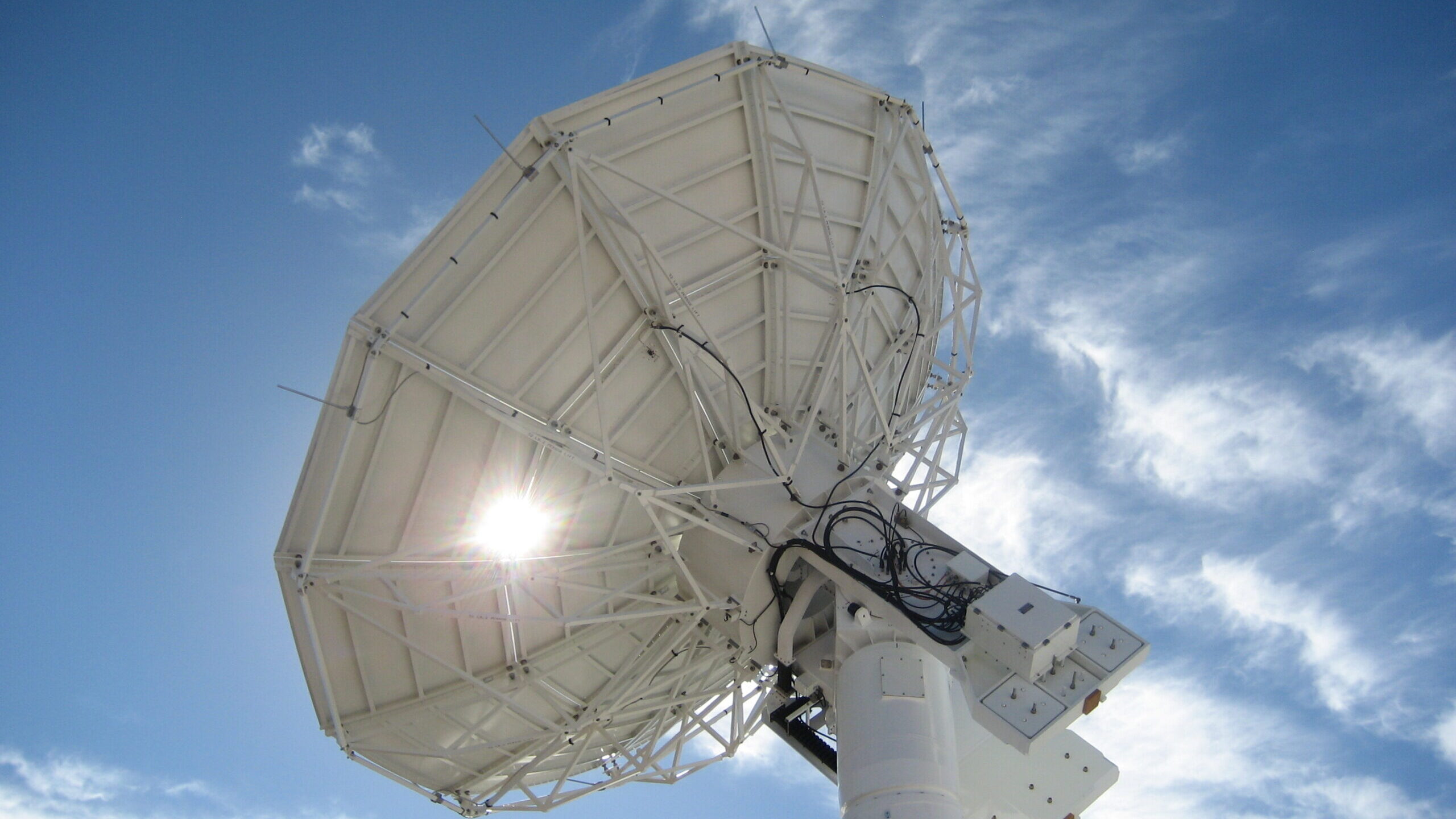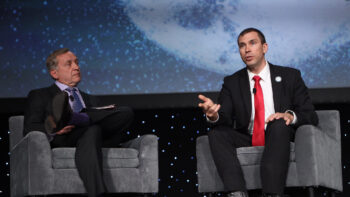
The 22nd Space Operations Squadron is testing a new $35 million transportable ground antenna, which will be used for future contingency operations support at Air Force Satellite Control Network ground stations around the world. (U.S. Air Force courtesy photo)
WASHINGTON: One of the top priorities for the new(ish) Space Force office charged with integrating acquisition programs is figuring out how to achieve the long-aspirational goal of having an “enterprise ground system” that standardizes its multiple ground stations for satellite command, control (C2) and operations, according to its director.
“There’s been a mandate to transition to an enterprise ground system, and get away from every program kind of doing their own thing with respect to ground, and then having the ground capability go to the ops area and have every ground system look a little different,” Clare Leon, head of Space Systems Command’s (SSC) Space Systems Integration Office (SSIO), told the National Security Space Association today.
SSIO is charged with integrating acquisition efforts of the various SSC program offices to ensure space systems are working together to provide mission capabilities for operators at Space Command, and to avoid duplication.
The Defense Department for almost a decade has been struggling with the fact that up to now each satellite system has been designed with a bespoke ground control system — including subsystems such as antennas and radios — traditionally based on proprietary hardware and software. To try to streamline and standardize how ground systems run, the Space Force has for several years been working on what it calls the Enterprise Ground Services (EGS) program. EGS isn’t focused on finding one ground station to rule them all, but rather it is focused on building a common tool kit for building satellite C2 systems based on open standards and common interfaces.
Space Force’s goal, Leon said, is to address the concerns coming from Space Operations Command “and to do a better job at not having, you know, 50 different ground systems that look different to operators and try to bring down that training load … to make the operations environment more effective.”
However, “progress has not been as great as we have wanted it to be,” she admitted. Thus her office recently ran a two-day workshop to “figure out what the vision is, and what every program is doing, and how to bring all that together.”
Leon said that “one of the discoveries” during that workshop was that there isn’t any “governance process” for how software is integrated into a “hardware platform,” and especially for “what mission-unique software should be developed by contractors and how it should be integrated.”
“So, the demand signal coming out of the workshop is that we need to work harder on governance and interfaces to enable programs to be more successful,” she noted. “Anyway, enterprise ground and the specific ‘go-forward’ plan is a major priority.”
That overarching plan, she added, will then need to be translated into a “program-by-program plan” to be carried out by the various program offices involved in developing and buying satellite ground control systems and receiver terminals.
Leon said that SSIO has three more integration workshops coming up, on: digital engineering, with her office now responsible for the service’s “digital transformation;” data, including how to optimize usage of the vast quantities of data gathered by satellite systems; and networks, including looking at how information can be safely transmitted across multiple classification levels.
In a Taiwan conflict, tough choices could come for Big Tech
Washington could do more to incentivize tech companies to distance themselves from China, but CEOs should examine how they’d react to a fight in the Pacific, CSET’s Sam Bresnick and Emelia Probasco argue.



























